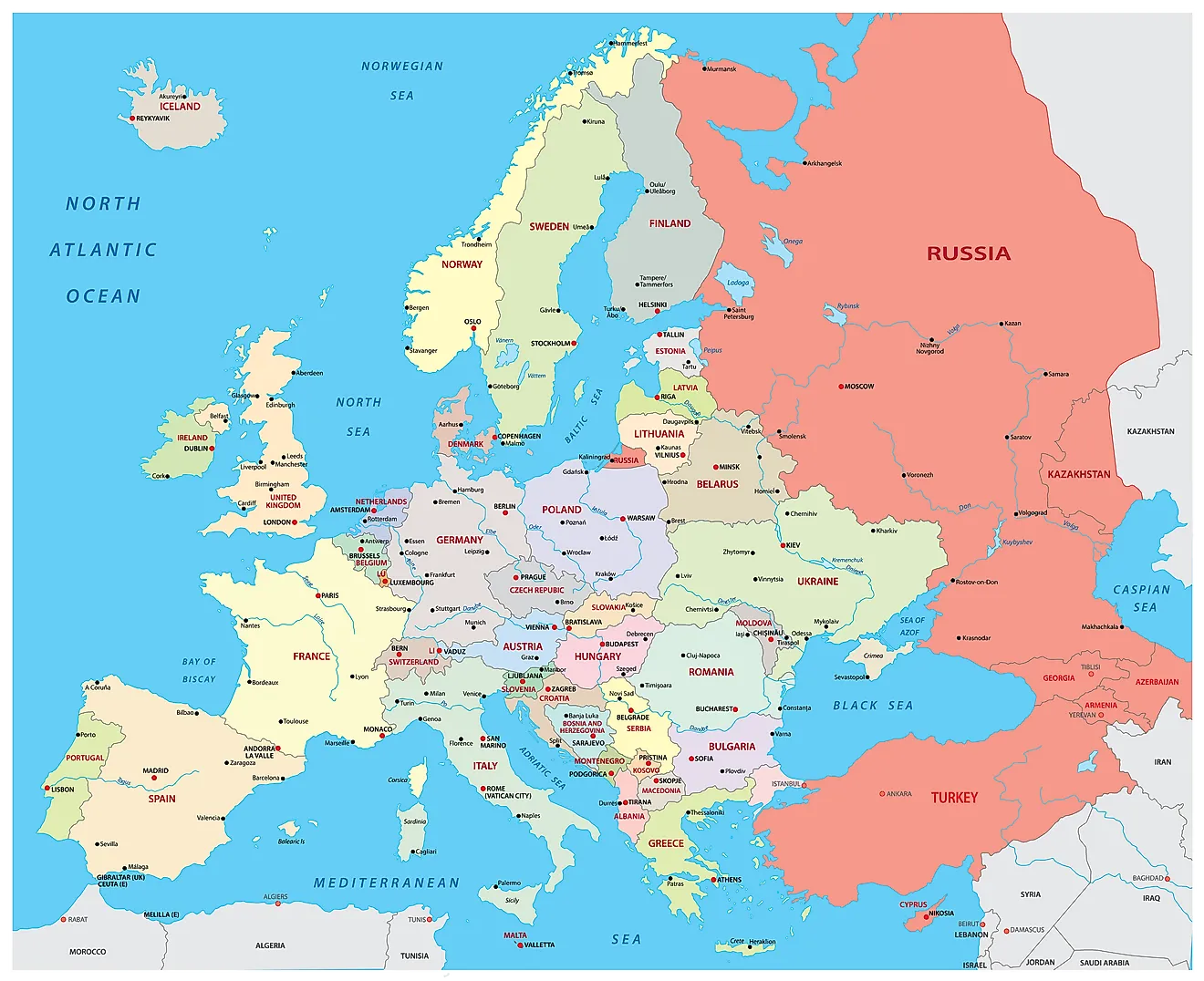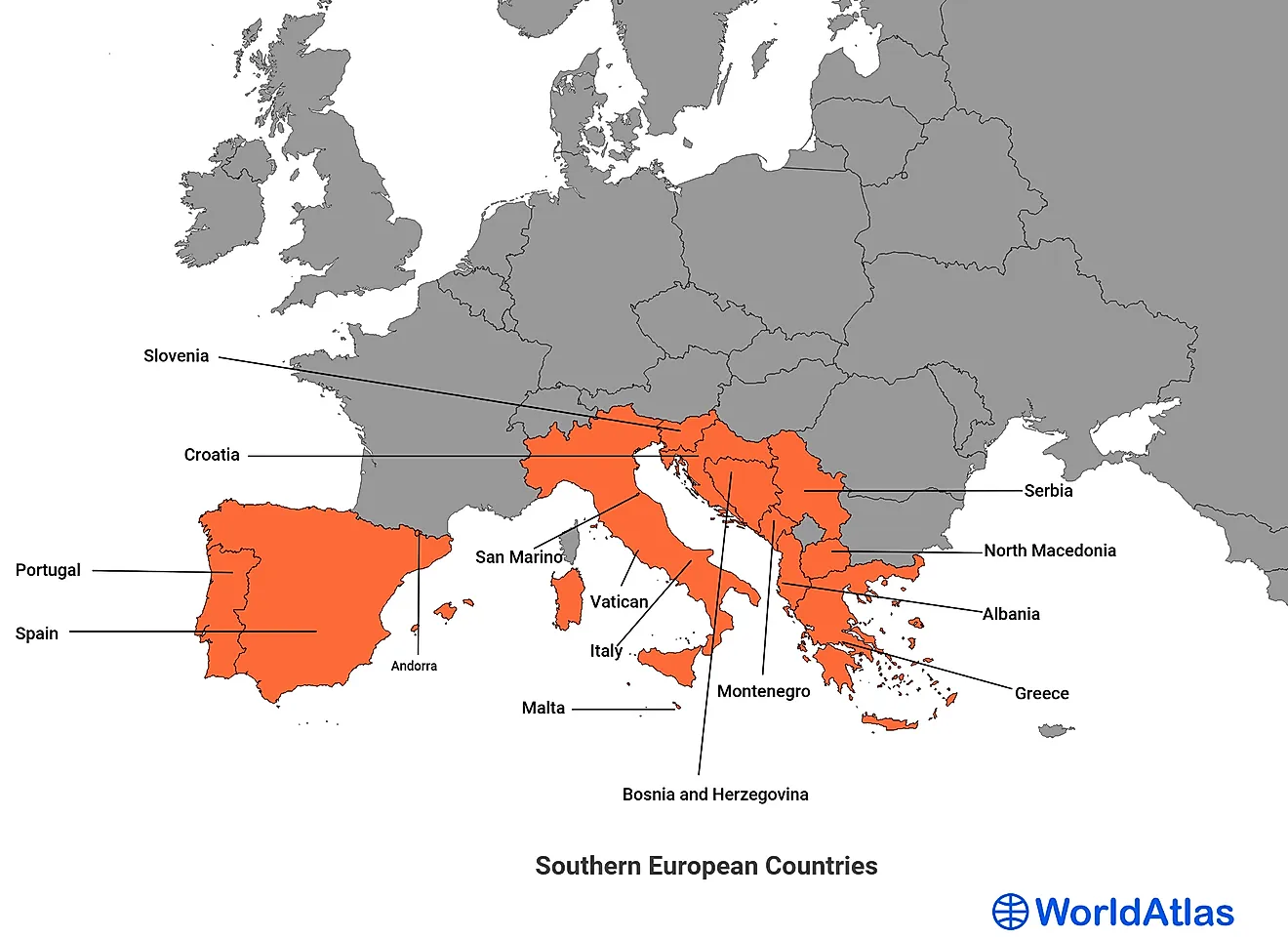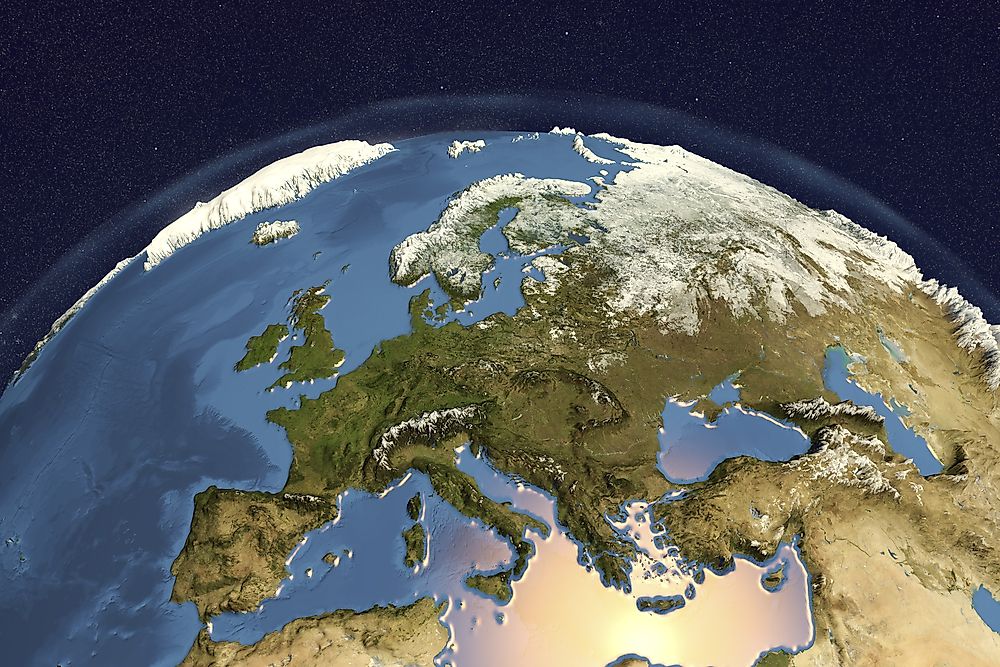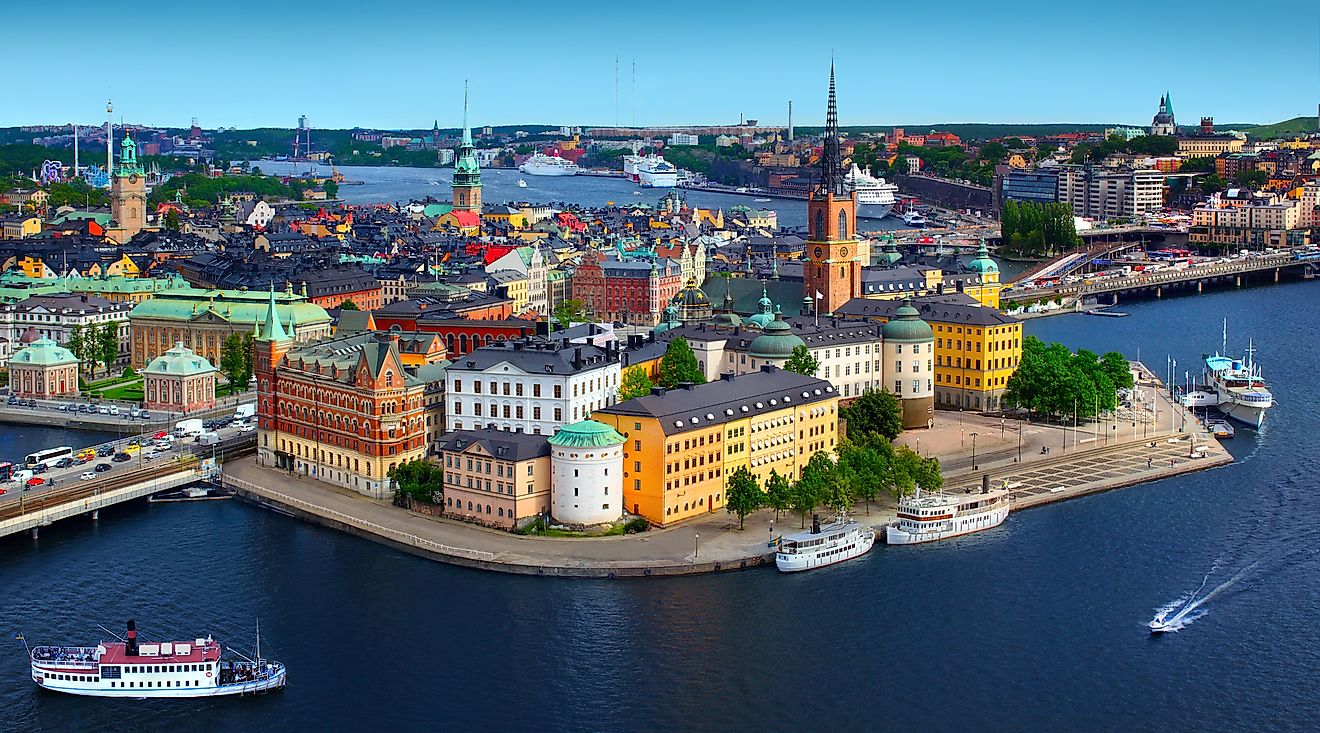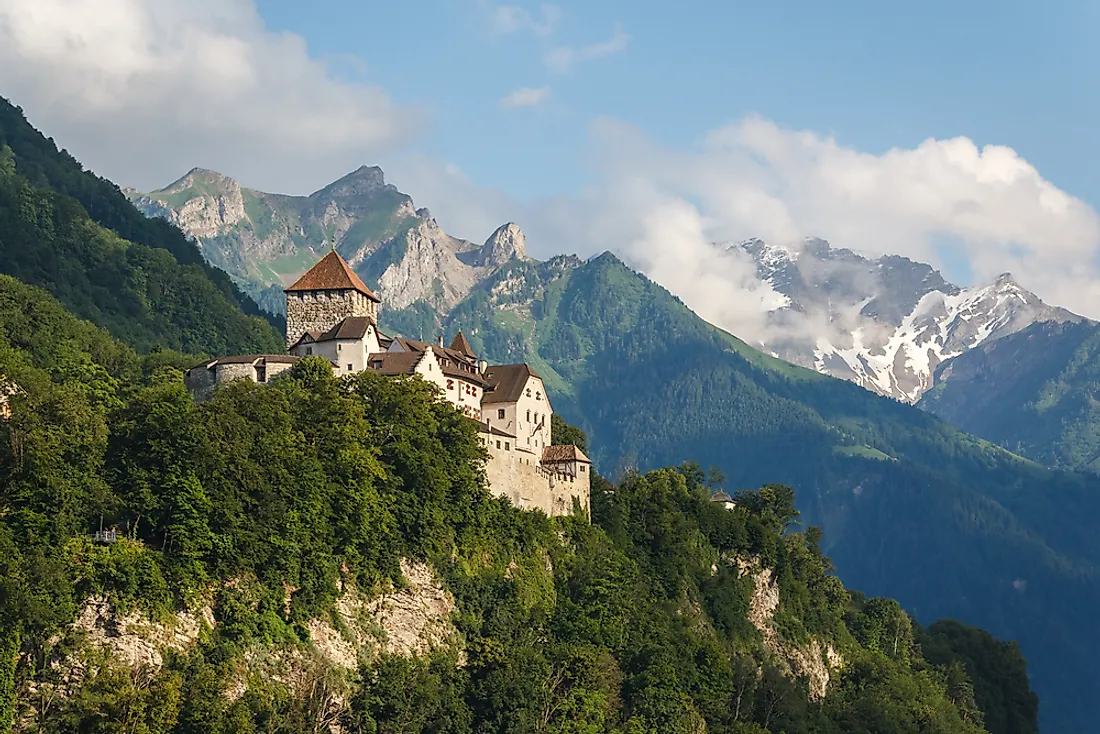Eastern European Countries

- All the countries of Eastern Europe were once part of the communist eastern bloc of countries led by the USSR during the Cold War.
- Most of Eastern Europe's countries have pursued closer ties with the West and greater European integration.
- Russia is the largest and most populous country in Eastern Europe.
- Moldova is the smallest and least populated country in Eastern Europe.
The 10 countries that constitute what the UN considers to be Eastern Europe were all once part of the eastern, communist bloc of countries led by the Soviet Union during the Cold War. Some were part of the Soviet Union itself, while others were Soviet satellite states. Following the collapse of the Soviet Union in the early 1990s, many of the region’s countries have become more closely integrated with the West, and have become part of the European Union and NATO. These are the countries of Eastern Europe.
Belarus
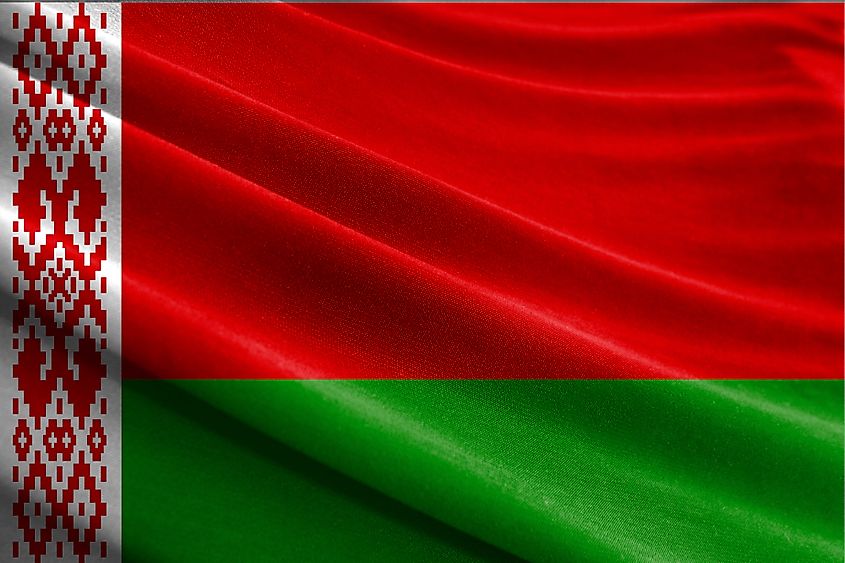
Belarus is a former Soviet republic, which gained independence in 1991. It has a population of approximately 9.4 million people. After breaking away from the USSR, Belarus maintained close ties to Russia, unlike many other countries in Eastern Europe that have grown closer to the West. The Belarussian President, Alexandr Lukashenko, who has ruled the country since 1994, has been criticized for being an autocratic ruler. In 2020, he again won re-election in a vote largely condemned by the West and opposition activists in Belarus as rigged.
Bulgaria
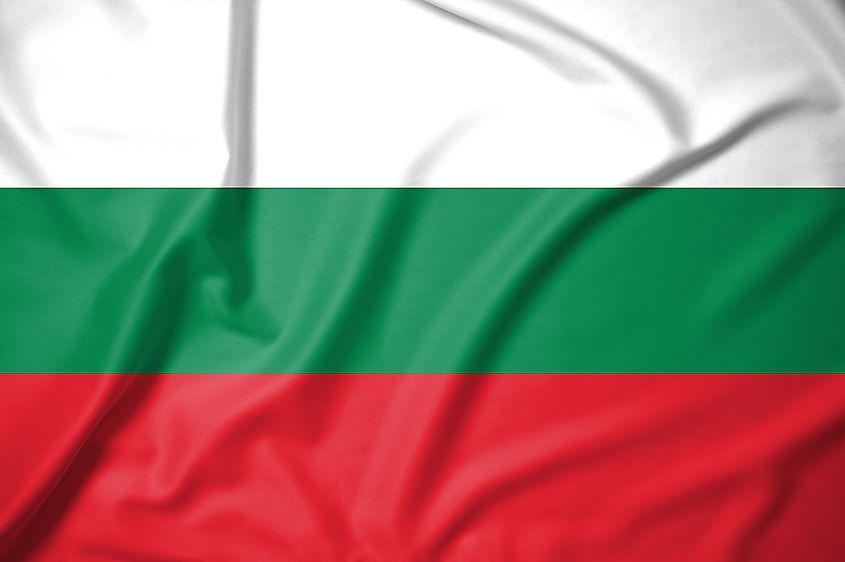
Bulgaria has a population of about 6.9 million people. The country was a member of the Warsaw Pact during the Cold War. In 1990, however, the country’s communist regime gave up power. Since the fall of communism, Bulgaria has transitioned to a capitalist, market economy. It has also moved away from Russian influence and into the West’s sphere of influence. Bulgaria joined NATO in 2004, and in 2007, became part of the EU.
Czech Republic
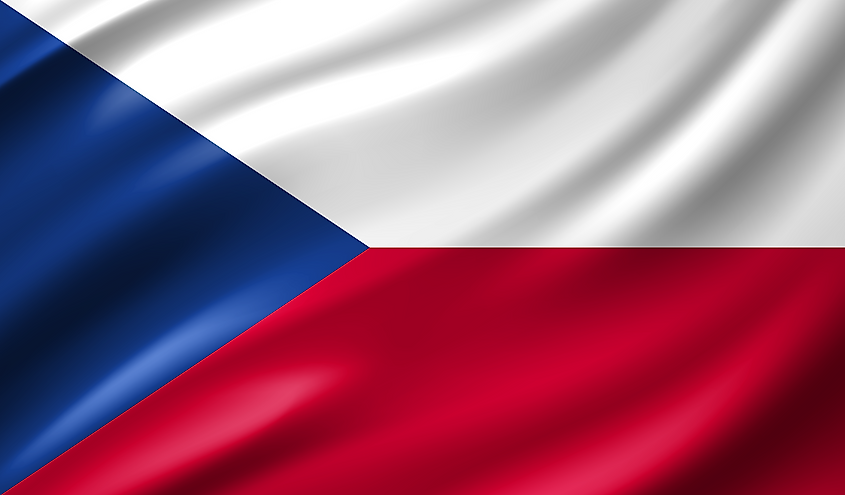
The landlocked Czech Republic is a country of approximately 10.7 million people. It was formally part of the country known as Czechoslovakia, which unified Czechs and Slovaks into one state. Czechoslovakia was part of the communist bloc of states during the Cold War. In 1989, however, mass protests in the country forced the communist regime from power. Two years later, the “Velvet Divorce” took place in which the country was divided into two states, the Czech Republic and Slovakia. In 1999, the Czech Republic became one of the first former Warsaw Pact members to join NATO. Five years later, the Czech Republic became a member of the EU.
Hungary
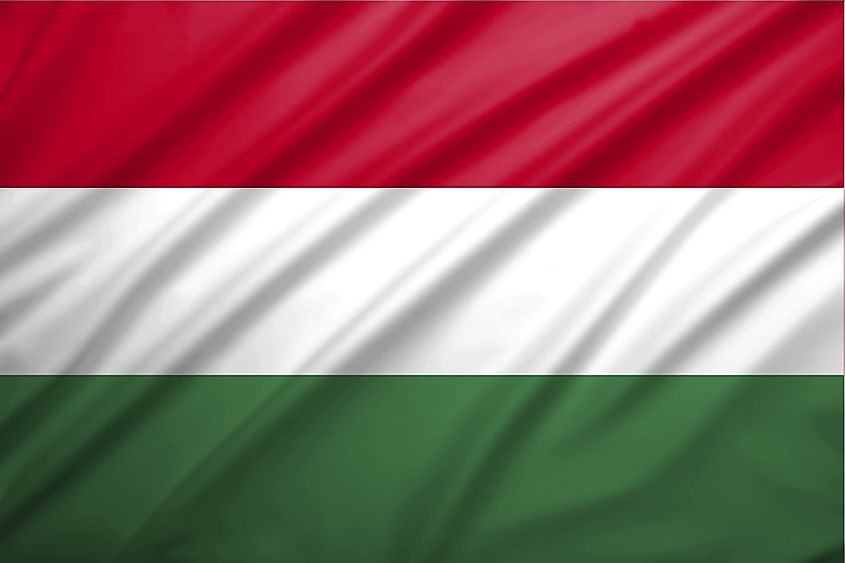
Hungary is a landlocked country in Eastern Europe that contains about 9.6 million people. Like all the countries of Eastern Europe, it was part of the communist eastern bloc during the Cold War. As with other former eastern bloc countries, communism came to an end in Hungary in 1989. The country joined NATO in 1999, and the EU in 2004. Interestingly, Hungary’s native inhabitants, known as the Magyars, did not originate in Europe, but eventually migrated to what is now Hungary from Asia, though there are competing theories as to where in Asia the Magyars originally came from.
Poland
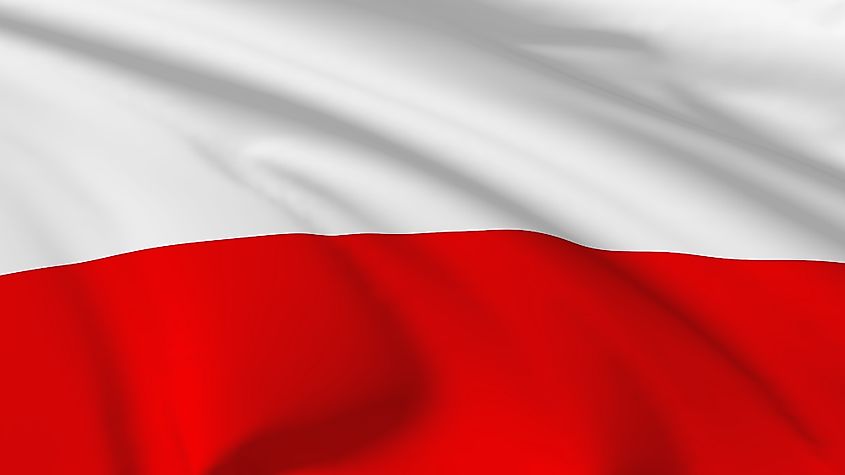
Poland is a country of approximately 37.8 million people. Its population has been steadily declining since communist rule came to an end in the country in 1989. It was a Polish Pope, John Paul II, who was widely seen as one of the catalysts for the end of communism in Poland. Like other former Soviet satellite states, Poland transitioned to a capitalist, market economy. In 1999, it joined Hungary and the Czech Republic as the first Eastern European countries to join NATO, and in 2004, became part of the EU.
Moldova
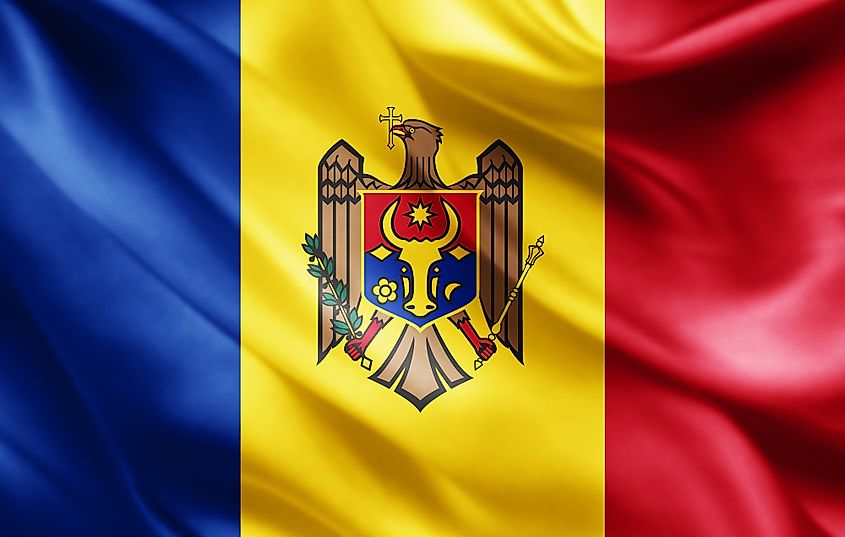
Moldova is home to about 4 million people. Before gaining independence in 1990, Moldova was one of the republics that made up the Soviet Union. The story of Moldova since independence has been one of hardship and the ongoing struggle between the West and Russia for influence in the country. A separatist conflict in the Trans-Dniester region of the country has also contributed to instability. Today, Moldova is the poorest country in Europe.
Romania
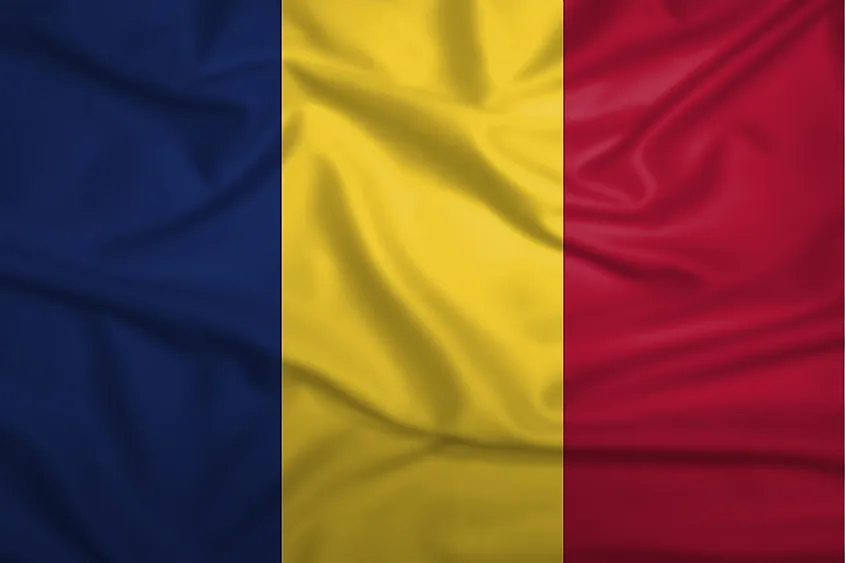
Romania is a country of roughly 19 million people. Like Poland, the country has seen its population decline since the fall of communism. Romania’s break with communism came following a violent uprising in 1989, which culminated in the execution death of the country’s communist leader, Nicolae Ceacescu. Since then, Romania has grown closer to the West, joining NATO in 2004, and the EU in 2007.
Russia
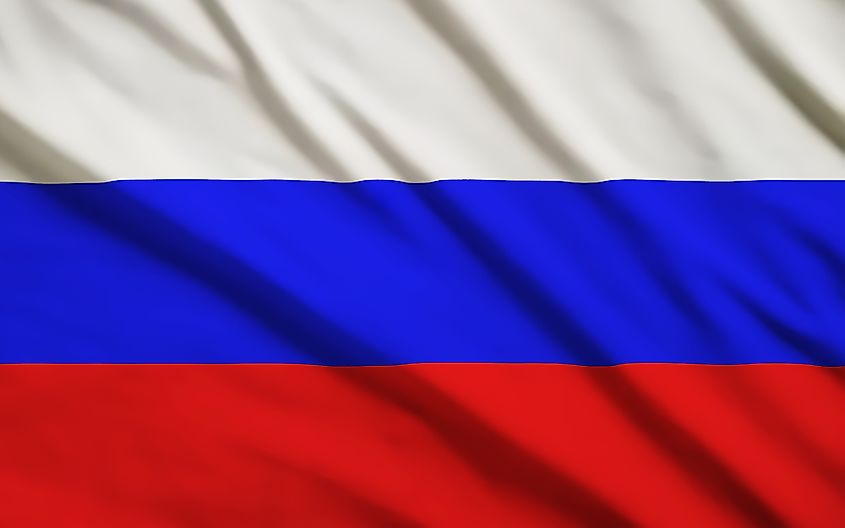
The Russian Federation is the largest and most populous country in Eastern Europe. Its population is approximately 144 million. Russia was the dominant force in what was the Soviet Union. In 1991, when the Soviet Union collapsed, Russia, like the other 14 republics of the USSR, becomes independent. The country struggled mightily with economic reform and internal unrest in the 1990s. By the early 2000s, however, the country gained a measure of stability under President Vladimir Putin, who has sought to rebuild Russia’s military and political influence to the levels that it once had during Soviet times. Leaders in the West have become increasingly concerned with Russia’s growing assertiveness under Putin.
Slovakia
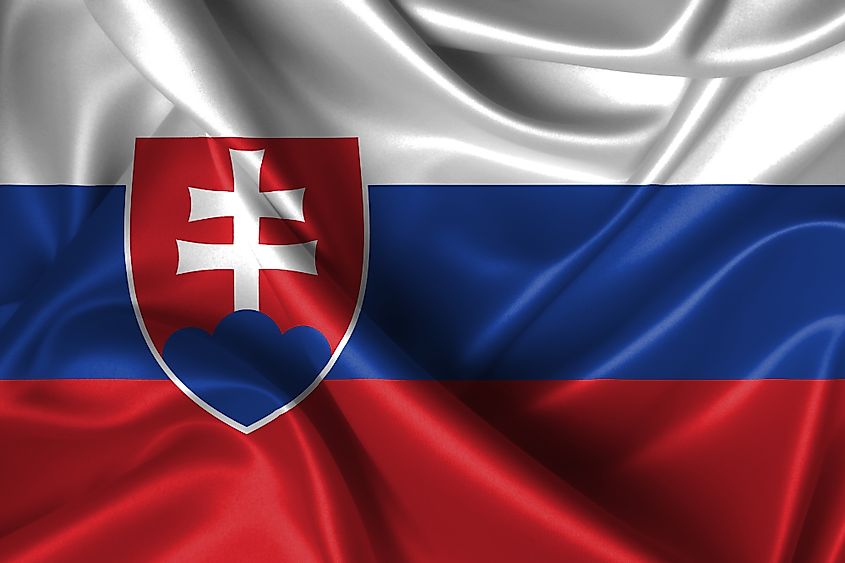
Slovakia, a landlocked country of roughly 5.4 million people, was once one of the two halves that comprised Czechoslovakia. In 1993, following the so-called Velvet Divorce, Slovakia became independent. Its transition to a capitalist, market economy did not go as quickly or as smoothly as it did for the Czechs. Nevertheless, Slovakia did eventually pursue greater integration with the West. In 2004, it became a member of both NATO and the EU.
Ukraine
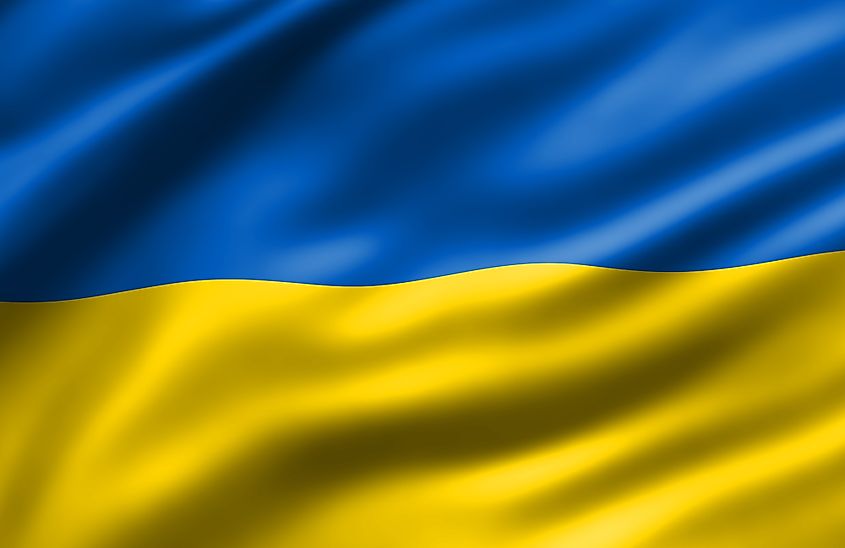
Ukraine was the largest and second most populous republic of the Soviet Union. Today, it is an independent country consisting of approximately 43.5 million people. Like Poland and Romania, Ukraine has seen its population decline following the collapse of the Soviet empire. Now, the country is the frontline in the battle for influence between the West and Russia. A people’s revolution led to the overthrow of a pro-Russian president in 2014. In response, Russia seized control over the Ukrainian peninsula, Crimea. Russia has also given support to an armed insurrection in eastern Ukraine by pro-Russian rebels. The biggest question in Ukrainian politics today is whether the country should try to forge closer ties with the West, or bring itself back into Russia’s sphere of influence.
Eastern Europe Now And In The Future
While most of Eastern Europe continues to integrate itself with the West, especially with the EU, Russia under President Vladimir Putin is determined to reassert Russian influence over the former Soviet republics and satellite states. At the same time, there is growing support among the region’s population for far-right political movements, some of which have managed to take power and attempted to erode the still-young democratic institutions of their respective countries. Hence, Eastern Europe’s road to greater integration with the rest of the continent is getting increasingly bumpy.
Read More:
Eastern European Countries
| Rank | Country | Estimated Population | Area (in sq. km) |
|---|---|---|---|
| 1 | Belarus | 9,466,860 | 207,600 |
| 2 | Bulgaria | 6,975,760 | 110,879 |
| 3 | Czech Republic | 10,669,710 | 78,867 |
| 4 | Hungary | 9,769,950 | 93,028 |
| 5 | Poland | 37,970,870 | 312,685 |
| 6 | Moldova | 2,657,640 | 33,851 |
| 7 | Romania | 19,356,540 | 238,391 |
| 8 | Russia | 144,373,540 | 17,098,242 |
| 9 | Slovakia | 5,454,070 | 49,035 |
| 10 | Ukraine | 44,385,150 | 603,550 |
